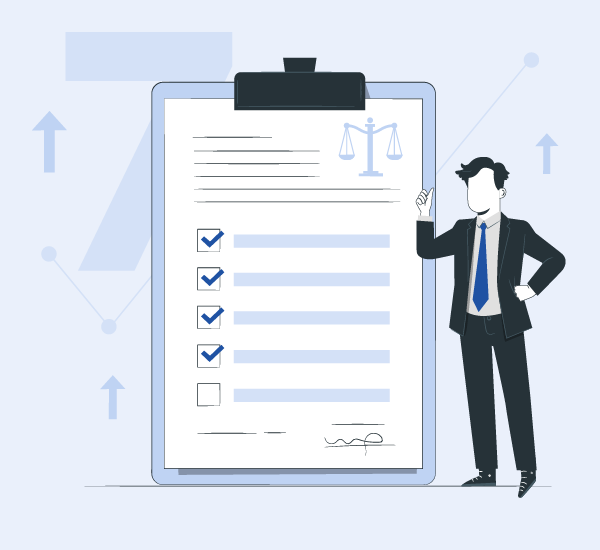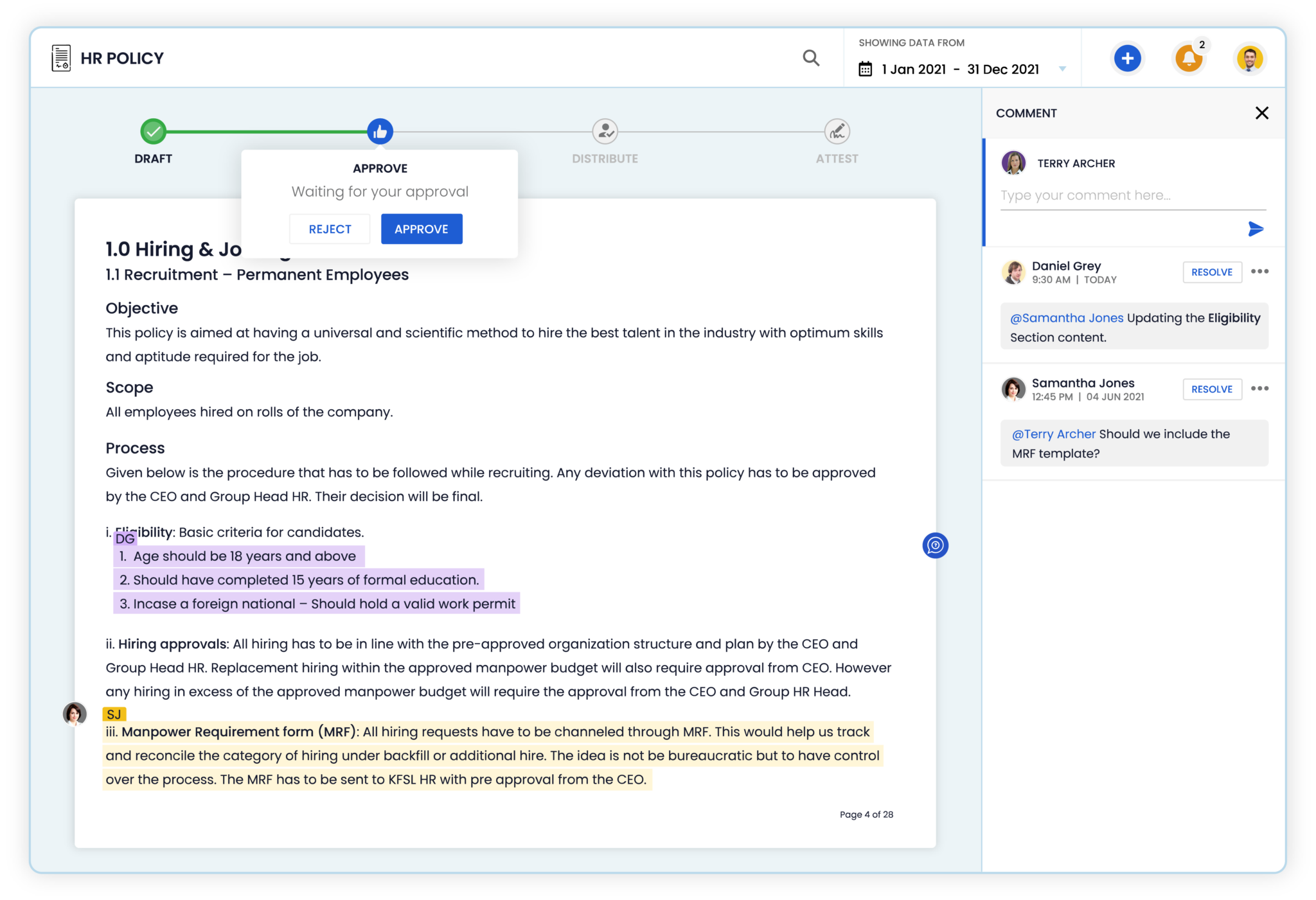7 Tips to Improve Your Regulatory Readiness in 2023
The regulations exist for a reason – they help ensure that organizations operate in a legal and compliant manner. They also protect the stakeholders’ interests and uphold the reputation and integrity of the organizations. If your organization fails to comply, it leads to fines, penalties, and even criminal charges. The Securities and Exchange Commission recently announced that it filed 760 total enforcement actions in the fiscal year 2022, a whopping 9 percent increase over the previous year.

Regulatory readiness or complying with regulations is a complex and time-intensive process, and no universal rule applies to all organizations. The number of regulations businesses must comply with can vary depending on their industry or geography, including regulations such as the Health Insurance Portability and Accountability Act, General Data Protection Regulation, Payment Card Industry Data Security Standard, and the Family Educational Rights and Privacy Act. Again, only a few compliance actions will fully meet all requirements.
Key takeaways (TL;DR)
- Explore how proactive regulatory monitoring turns compliance from a burden into a strategic advantage.
- Understand how strong policy management and internal controls create the backbone of true regulatory readiness.
- Empowered compliance teams drive accountability, awareness, and risk mitigation across the organization.
- Continuous audits and automation streamline compliance, cut costs, and boost confidence.
- A formal, tech-enabled compliance strategy safeguards reputation while fueling long-term growth.
Due to the potential consequences that laws and regulations can have on a firm’s strategy and reputation, organizations must prioritize regulatory readiness. One way they can do this is by establishing a proactive regulatory monitoring and engagement plan integrated throughout the organization. Let’s explore the tips and best practices to become regulatory-ready.
Enhance regulatory awareness
To meet compliance requirements, an organization must stay informed about changing regulatory trends and their potential effects on the business and its strategy. Stay current by studying these trends and communicating this information to relevant parties. This will help prioritize the effort to respond to the regulatory changes.
A successful regulatory awareness process involves:
- Gathering information.
- Filtering out non-essential information.
- Assigning critical information to the concerned team for analysis.
- Tracking responsibilities.
- Assessing the impact on the organization.
The objective is to have a strategy that keeps track of existing regulations, monitors regulatory changes, alerts the organization of potential risks, and ensures accountability and cooperation in regard to changes affecting the company. A consistent process is necessary to provide transparent real-time accountability across different regulatory areas, with a centralized system to monitor changes, assess impact, and implement risk management, policies, training, and control updates.
Sometimes, it makes sense to have a government relations strategy for dealing with external stakeholders such as lawmakers and regulators. This helps the lawmakers understand the organization’s priorities and provide more information for them to monitor. These interactions help the organization understand these laws’ from the regulatory and political context, the likelihood of enactment, and other important factors. At the same time, industry influence on regulatory bodies also exists. Organizations can engage in lobbying activities to either promote or challenge a bill during its legislative journey, as well as enhance their lobbying activities at federal agencies throughout the rule-making process and after it.
Efficient compliance officers act as a proactive defense
The compliance function ensures that a business adheres to external rules and internal controls. An organization requires a professional/team to build awareness of the laws and regulations impacting your field and supervise your company’s compliance obligations. This could be achieved by hiring a full-time employee or collaborating with an external consultant or legal advisor to protect your business.
The compliance team/professional should be able to work closely with stakeholders to obtain and share relevant information to develop appropriate regulatory management strategies.
Prioritize policy management and implement strong internal controls
Policies, procedures, and controls provide the framework for robust regulatory management. On delving deeper, a core part of any regulatory or regulatory change management process is performing impact assessments to determine the applicability of the event to your business and assess compliance risk. Ensure your organization has the right policies in place. Connect policies to rules to ensure your organization has the right policies.
Once the policies and procedures are in place, adequate infrastructure must be established for optimal policy communication. New policies must be developed and enforced on an organization-wide scale, all efficiently. Train your employees on policies, and encourage them to adhere to policies and procedures. If policies provide the first line of defense, training serves up the second – especially when your compliance training aligns with your policies. By training employees on your policies, you reinforce the behaviors and processes that will be the most effective.

Hold stakeholders accountable
Establish regulatory compliance responsibilities and accountability and their relationship clearly to the employees. Balancing accountability with autonomy is crucial in the workplace. Empowering employees to control their tasks allows them to take ownership and strive for greatness, leading to a highly successful organization. However, this must be maintained alongside a strong sense of accountability.
Linking accountability to compliance performance involves proactively monitoring both the process and outcomes, addressing poor performance, and recognizing exceptional results. In case of non-compliance, it’s crucial to hold employees accountable, provide training on expectations and support them in improving. At the same time, it’s important to acknowledge and reward employees who comply with guidelines, behave appropriately, and exceed expectations.
Conduct a compliance audit for regulatory readiness
The process of achieving compliance can significantly vary, depending on the regulation and what it measures. To begin with, conduct a thorough audit to establish a compliance baseline and identify any potential issues. Evaluate the security policies, risk management procedures, and other factors to assess the risks, including their likelihood and impact on your business. Once the weaknesses and compliance gaps have been identified, implement best practices to address them.
Monitor the compliance performance continuously
An effective compliance strategy involves the following:
- Regularly monitoring regulatory compliance performance.
- Tracking any violations that occur.
- Implementing strategies to prevent them from happening again.
Keeping track of the cost and impact of these violations, such as their effect on the company’s finances, efficiency, customer confidence, and reputation, is also crucial to ensure that non-compliance does not negatively impact the company. To maintain continuous compliance in today’s multi-regulatory setting, establish a structured compliance system within the company. This will allow the organization to align its controls with multiple frameworks and regulations at once, reducing the need for excessive testing and minimizing the stress of auditing. An efficient crosswalk will streamline the testing process.
Automate compliance processes and boost your compliance readiness
Automated compliance management simplifies the compliance process and reduces errors that may occur with manual management. Workflow automation for compliance involves compliance software to automate tasks and controls. This streamlines business processes and allows tracking all compliance activities in one place, avoiding using multiple sources such as spreadsheets, word documents, and web browser bookmarks. Automation provides a centralized repository for all compliance data, ensuring that decisions are made based on accurate and up-to-date information.
Final Thoughts
A well-defined and organized approach to regulatory readiness is crucial for implementing a compliance program. A formal approach helps communicate the strategy, prioritize tasks, and proactively manage compliance projects, ensuring organizational commitment and alignment. This also reduces the risk of being too late or ineffective in meeting regulatory requirements.

